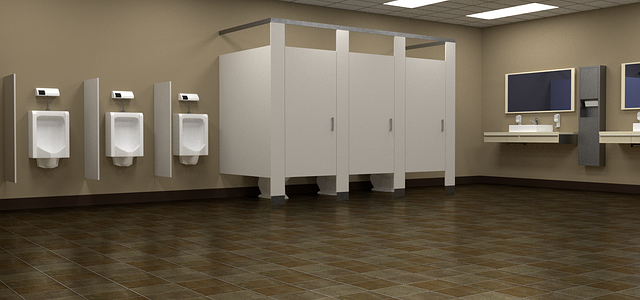Freedom Day – How Do You Feel About Returning to The Office?
For some, Freedom Day marks a much-awaited return to some of our pre-pandemic habits, including working at the office instead of at home. But is everyone keen to come...
Read Full Article
COVID-19 is affecting how we all use buildings and will continue to do so even once lockdown measures are lifted.
As more information on how the virus is spread and how best to control the transmission comes to light, the management of common areas of office buildings such as washrooms will be paramount in keeping the virus under control.
In the official government guidance for people who work in or run offices, contact centres and similar indoor environments, washroom facilities are mentioned a few times.
Under the section named “5.3 Hygiene: handwashing, sanitation facilities and toilets” The following steps are recommended for regulating use of “locker rooms, changing areas and other facility areas to reduce concurrent usage”:
In April, the British Council for Offices (BCO) published a paper exploring how offices will, in the short term, need to be redesigned to ensure social distancing guidelines are being followed.
Titled “Thoughts on Office Design and Operation After Covid-19”, the paper discusses contamination routes of the COVID-19, one being faecal–oral:
“SARS was spread via a defective sanitation system in at least one severe case. Maintaining water in toilet traps and making sure that toilet lids are closed before flushing is important”
In terms of how office toilets might actually look in the next few years, the paper suggests that “superloos or pod-type toilets with touch-free door access and dispensers” will become the norm.
It also says of washrooms “Supply and extract ventilation may be preferred to the usual extract-only systems, to improve dilution and removal of contaminants”.
Kimberly-Clark Professional says that hygiene does not stop at the washroom and claim that understanding “the science behind surface wiping” is the key to keeping colleagues and visitors safe and well.
Disinfecting kills germs on surfaces or objects by using chemicals. But this process does not necessarily clean dirty surfaces or remove germs, but by killing germs on a surface after cleaning, it can further lower the risk of spreading infection.
The Centers for Disease Control & Prevention (CDC) recommends a two-step daily routine to clean frequently touched surfaces:
The CDC guidelines also recommend providing disposable wipes so that commonly used surfaces can be wiped down before each use. Surfaces considered hot spots for germs also include computer keyboards, phones and light switches.
The average desk has 400 times more bacteria than a toilet seat according to a study by Dr. Charles Gerba at the University of Arizona. Another study found that a keyboard harbours around 8,900 bacteria and a mobile phone harbours 6,300 bacteria.
Kimberly-Clark Professional maintains that today’s current conditions require tougher hygiene protocols. While placing hand sanitiser and signage in offices and common areas is a step in the right direction, they say the studies show it simply is “not enough to make a real impact”.
Picture: A digital mock-up of a public bathroom with urinals and toilet stalls
Article written by Ella Tansley | Published 27 May 2020
For some, Freedom Day marks a much-awaited return to some of our pre-pandemic habits, including working at the office instead of at home. But is everyone keen to come...
Read Full ArticleAround half of UK office workers feel confident about returning to work without a fully vaccinated workplace. Research shows that 80 per cent of UK office...
Read Full ArticleWith businesses already putting plans in place to get people back into the office, ensuring good hygiene practices is paramount in preventing any spread of coronavirus in...
Read Full ArticleA smart-monitoring technology company has launched a wearable smart tag designed to make social distancing easier. The body-worn Orbi-Trace smart tag gives the...
Read Full ArticleBureau Veritas is stressing the need to carry out indoor air quality surveys, swab-sampling programs and quantification of fresh air assessments, to ensure premises...
Read Full ArticleIn an address to MPs today, Boris Johnson has tightened COVID-19 restrictions in England, calling on people to work from home where possible and pausing plans for...
Read Full ArticleBoris’ new rule of six doesn’t apply to workplaces, but how might the tightening of lockdown measures affect general confidence when returning to...
Read Full ArticleThe Transport Minister has told a London radio station that: “Our central message is pretty straightforward: we are saying to people it is now safe to return to...
Read Full ArticleCatering services provider Bartlett Mitchell has announced the launch of “BM delivered” to support clients looking for temporary food solutions during...
Read Full ArticleAn undeniable staple of UK office culture, extra hygiene measures in workplaces to prevent COVID transmission may temporarily spell the end of the communal office tea and...
Read Full Article